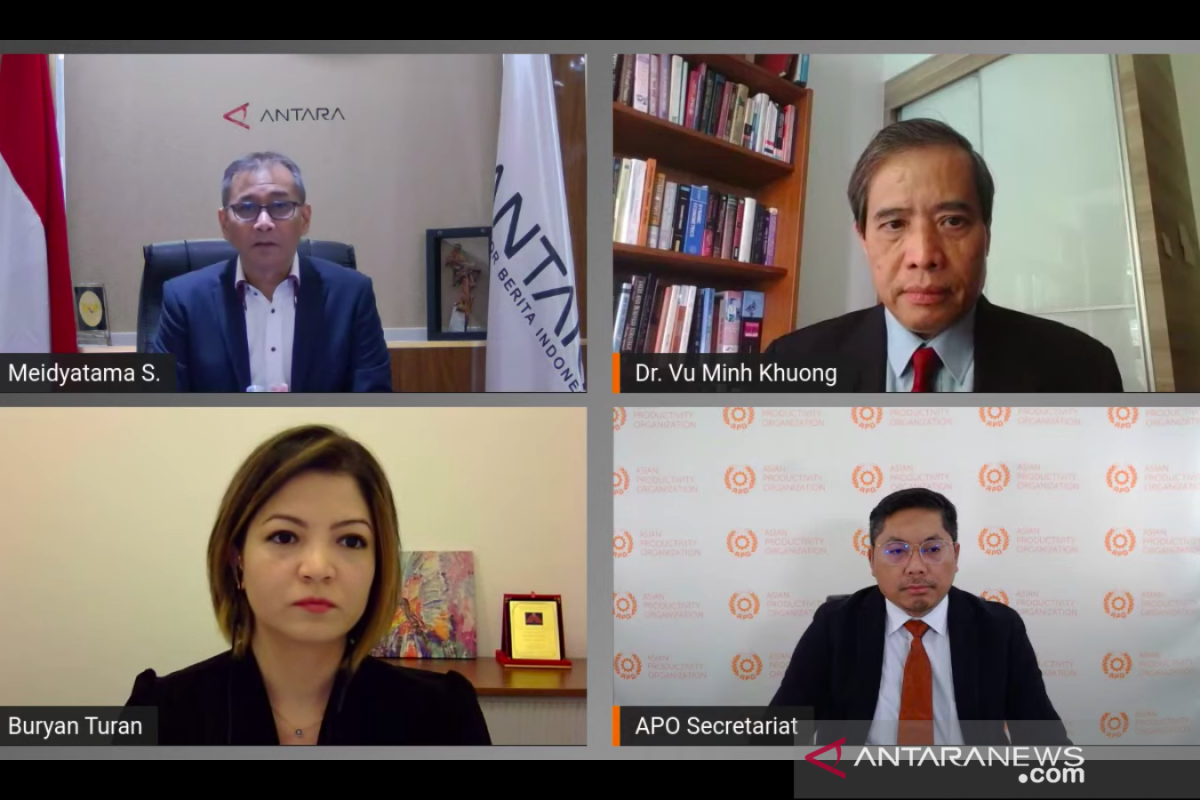I see Indonesia has performed very well but actually somehow it has not yet reached the pre-pandemic level in 2021, but it will perform very well again in 2022 and 2023Jakarta (ANTARA) - Indonesia is tending towards a normal economic recovery pattern, Associate Professor at the Lee Kuan Yew School of Public Policy at the National University of Singapore, Dr. Vu Minh Kuong, has said.
He made the remark in reference to the annual estimates and forecasts issued by the World Bank (WB) and Asian Development Bank (ADB) in January 2022 and December 2021, respectively.
“I see Indonesia has performed very well but actually somehow it has not yet reached the pre-pandemic level in 2021, but it will perform very well again in 2022 and 2023,” Kuong noted during a virtual discussion on 'Productivity 2022: Rebound and Regrowth.'
Related news: Prioritize retail sector in 2022 PEN fund allocation: Researcher
The discussion was moderated by president director of Indonesia’s ANTARA News Agency, Meidyatama Suryodiningrat, here on Tuesday.
Based on data from the WB and ADB, Indonesia recorded real gross domestic product (GDP) growth of 5.0 percent in 2019, -2.1 percent in 2020, 3.7 percent in 2021, and is forecast to record a growth of 5.2 percent in 2022 and 5.1 percent in 2023, Kuong noted.
One ASEAN country that has tended to follow a similar pattern has been Malaysia, he added.
Malaysia recorded real GDP growth of 4.4 percent in 2019, -5.6 percent in 2020, 3.3 percent in 2021, and is expected to grow 5.8 percent in 2022 and 4.5 in 2023, he said.
“Most economies suffered from a severe contraction in 2020. That’s unavoidable,” he highlighted.
The pace and pattern of recovery have varied largely, but most economies have come back to pre-pandemic levels in 2021 or are expected to in 2022, he added.
Meanwhile, India recorded a GDP growth of 4.0 percent in 2019, -7.3 percent in 2020, 8.3 percent in 2021, and has been forecast to chalk up growth of 8.7 percent in 2022 and 6.8 percent in 2023, Kuong noted.
Related news: Recovery from pandemic hinges on economic, political stability: BKPM
China's GDP grew 6.0 percent in 2019, 2.2 percent in 2020, 8.0 percent in 2021, and has been forecast to expand by just 5.1 percent in 2022 and 5.3 percent in 2023, he said.
“China and India have shown strong recovery patterns. India appears to be reaping the first fruits of its structural and reform efforts,” he pointed out.
The Tiger-4 economies—Hong Kong, Singapore, South Korea, and Taiwan— and Turkey have exhibited strong rebound and regrowth, he added.
Among ASEAN countries, economic damages to Thailand, Cambodia, and the Philippines have been more severe both in terms of the magnitude of economic contraction and the slow pace of economic rebound, Kuong said.
Vietnam and Laos managed to expand their economy in 2020 and 2021, but their growth forecast for 2022 and 2023 is well below pre-pandemic rates, he added.
Meanwhile, Bangladesh has stood out as one of the best performers in economic resilience and recovery, he remarked.
Related news: Government upbeat about achieving forecasted economic growth in 2022
Related news: Survey highlights increase in corporate demand for financing
Reporter: Juwita Trisna Rahayu
Editor: Fardah Assegaf
Copyright © ANTARA 2022












